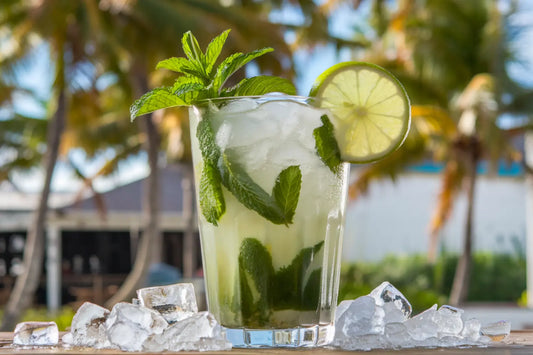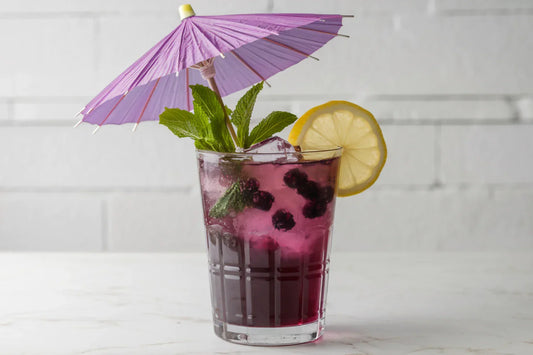What is a Pourer: Understanding the Essential Bar Tool
BarNeedWhen mixing cocktails, if you’re often concerned about spills or uncontrollable pours, a pourer is an indispensable tool. Although it may not stand out like a shaker or other bar tools, it effectively helps you control both the flow and amount of liquid in each pour—keeping your bartending neat and precise, and giving every drink a professional touch.
Next, let’s explore its definition, functions, and why it’s considered one of the most fundamental yet crucial bar tools.
Jump to:
What Is a Pourer
A pourer—also called a speed pourer, pour spout, liquor pourer, or bottle pourer—is typically made of stainless steel or plastic and is commonly used in bars or kitchens. It inserts into the neck of a bottle, ensuring a smooth, controlled flow of liquid and preventing over-pouring or splashing. Because of this, it generally serves the following functions:
- Accurate Pouring: A narrow spout allows the liquid to flow smoothly and steadily, making it easier to measure exact amounts.
- Leak Prevention: Helps keep your work area clean, reduces waste, and saves costs.
- Efficiency Boost: Enables bartenders to pour confidently and quickly, enhancing both speed and professional flair.
In short, it’s a small tool that helps you pour “fast and accurately” from the bottle. Most pourers also feature a rubber ring to fit common bottle sizes, creating a tight seal that prevents rapid alcohol evaporation. Some designs even come with a dust cap, offering added sealing and improved hygiene.

Types of Pourers
Although there are many styles of pourers on the market today—each with its own features, design, and usage scenarios—the following types are the most popular:
Measured Pourer
This style usually contains a mechanical or air valve system that dispenses a fixed amount, commonly available in 1 oz or 1.5 oz options each time. It’s essential for bars or restaurants needing strict cost control and is also beginner-friendly. Even if you’re new to mixing drinks and haven’t mastered the feel for measuring liquor, you can still achieve precise pours using a measured pourer.
Free-flow Pourer
The most common type. Unlike measured pourers, it doesn’t dispense a preset volume, relying instead on the bartender’s experience. As a result, it’s more flexible. Professionals often prefer using a jigger for measurement rather than a measured pourer, making the faster-flowing, higher-efficiency free-flow pourer a favorite in most bars.
Aerator Pourer
Mainly used for wine, this type features special channels or vents inside that allow the wine to interact with air as it’s poured, effectively speeding up the aeration process. While it’s convenient and quick, the result isn’t as thorough or delicate as using a traditional decanter—especially for well-aged wines or those requiring longer aeration.
Decorative Pourer
Unlike the functional focus of typical pourers, decorative pourers are more about creating a unique atmosphere or fun visual element in bar or party settings—for example, animal-themed designs like lions, or Halloween-themed skulls. They’re especially popular for home bars, adding style and personality.

How to Choose a Pourer
Now that you know the different types, you can pick the one that best suits your needs and role:
- Beginners: If you’re new to cocktail making, starting with a measured pourer can help you maintain the perfect ratio for your drink recipes.
- Wine Enthusiasts: An aerator pourer is a must-have for wine lovers, significantly shortening the decanting process and giving you an enjoyable “open-and-sip” experience.
- Professional Bartenders: The high-efficiency, flexible free-flow pourer is the top choice, allowing you to handle various drinks with ease and showcasing your expertise.
- Home Bartenders: A visually appealing decorative pourer can add personality and fun to your home bar, giving your mixing routine a unique sense of occasion.
Of course, pourers are generally quite affordable, so you can easily buy multiple styles to use in different situations or settings in the future.
Maintaining and Cleaning
1. Clean Before First Use:
Before using your pourer for the first time, soak and rinse it in warm water to remove any dust, bacteria, or other impurities accumulated during production and shipping.
2. Prompt Cleaning:
After each use, clean the pourer immediately to prevent odor buildup and leftover residue that could affect your next pour. It’s not recommended to leave the pourer attached to the bottle for extended periods—especially if it doesn’t have a dust cap—because alcohol can evaporate quickly, compromising the flavor.
3. Thorough Drying:
After washing, allow the pourer to air-dry in a well-ventilated area to prevent mold and unpleasant odors. If it isn’t completely dry before the next use, any remaining moisture could dilute the liquor.
Conclusion
A pourer plays a vital role in boosting bartending efficiency, preserving drink quality, minimizing wastage, and keeping your bar area clean. Whether you’re a home cocktail enthusiast or a professional bartender, this tool can significantly enhance your mixing experience. If you’re assembling a well-equipped bar set, a pourer is definitely a must-have component.





